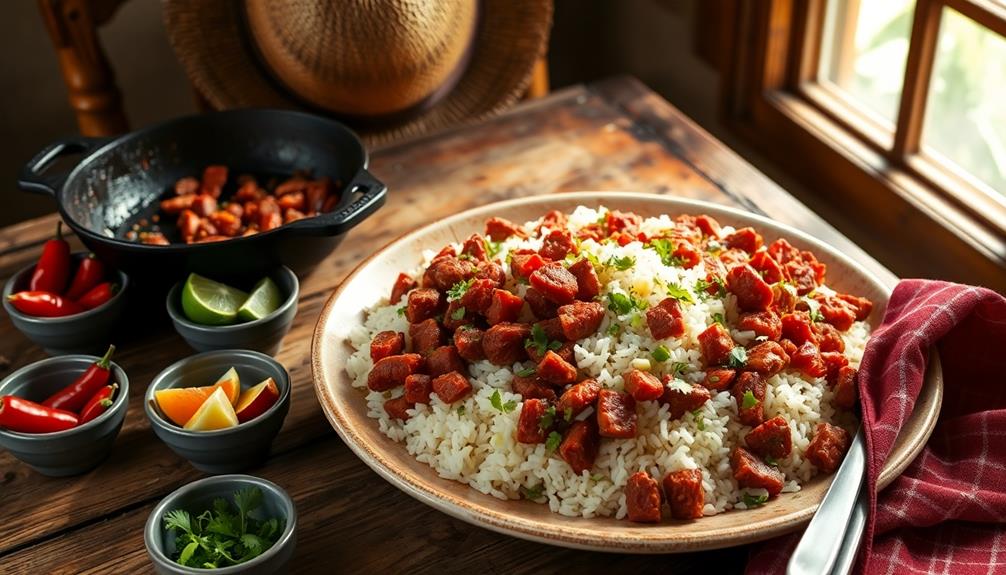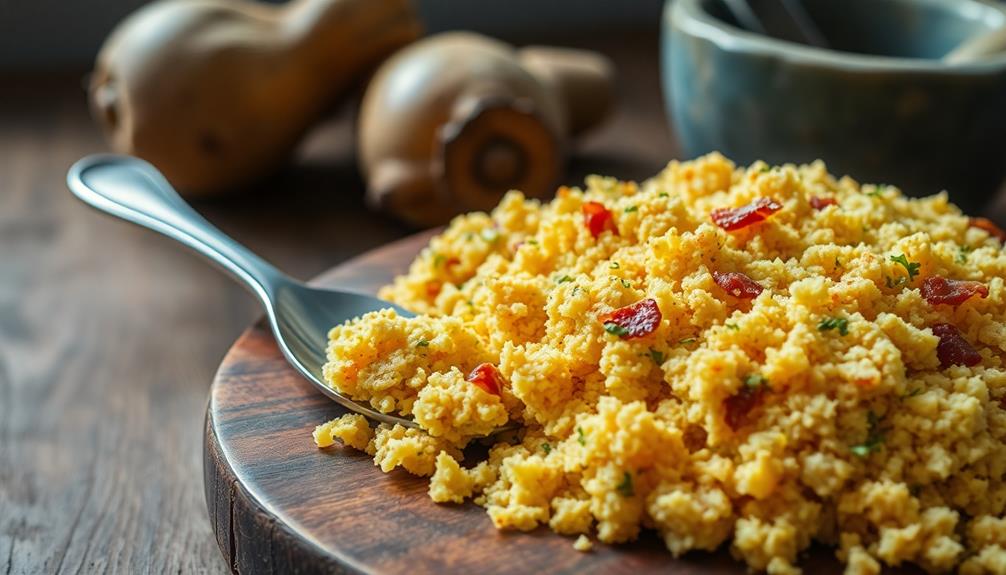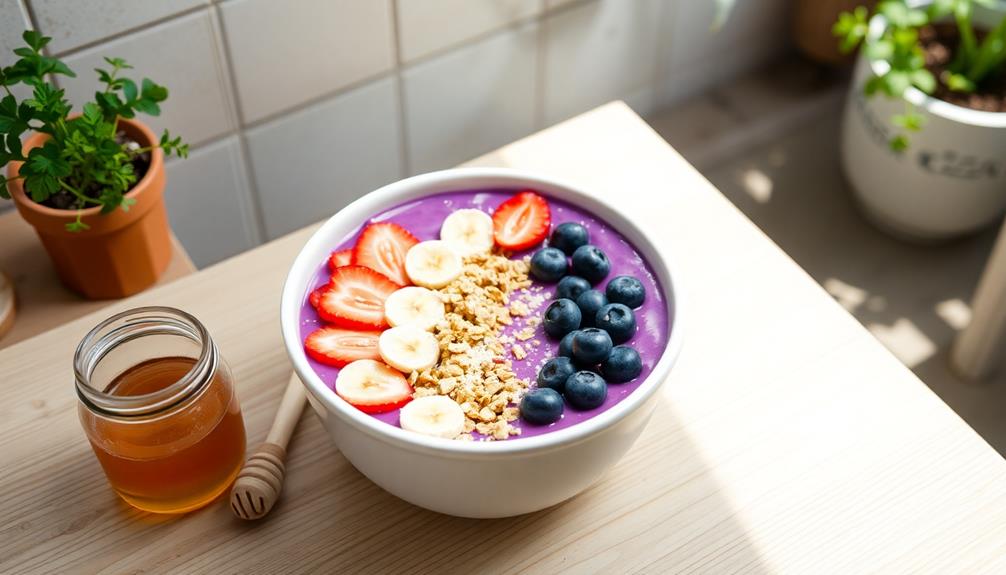Rice Carreteiro is a mouthwatering Brazilian dish that'll take you on a culinary adventure! It's a hearty meal that originated with cattle drivers, or gauchos, who needed sustenance during long journeys. You'll love the combination of rice, dried beef, onions, garlic, and tomatoes that make up this comforting dish. It's easy to make and perfect for family dinners or potlucks. You can even put your own spin on it by adding different meats or veggies. The best part? It's simple to cook but packed with flavor. If you're curious about the rich history and cooking techniques behind this Brazilian staple, there's so much more to discover! If you’ve enjoyed Rice Carreteiro, you might also want to try your hand at another classic Brazilian recipe for canjica. This traditional sweet treat is made with white corn, milk, sugar, and spices like cinnamon, and is commonly enjoyed during the Festa Junina festivals. It’s the perfect way to end a meal and satisfy your sweet tooth with a taste of Brazilian tradition.
Key Takeaways
- Rice Carreteiro is a traditional Brazilian dish originating from gaucho culture, featuring rice and dried beef.
- Key ingredients include long-grain rice, dried beef (charque), onions, garlic, and tomatoes.
- The dish evolved from a practical meal for cattle drivers to a beloved comfort food across Brazil.
- Cooking techniques involve sautéing, browning meat, and simmering rice to absorb flavors.
- Rice Carreteiro is versatile, allowing for personalization with different meats, vegetables, and spices.
History
Rice Carreteiro's roots stretch back to the early days of Brazil's cattle-driving culture. You'll find that this hearty dish was born out of necessity, as cowboys (known as gauchos) needed a filling meal they could easily prepare on long cattle drives. They'd use dried beef, called charque, which could last for weeks without spoiling. The gauchos would combine this beef with rice and whatever vegetables they could find along the way.
As you might imagine, the dish got its name from the carts (carretas) that the gauchos used to transport their goods. Over time, Rice Carreteiro became a beloved staple in Brazilian homes, not just on the trail. It's a testament to the ingenuity of these early cowboys!
The recipe has evolved, and now you'll often see it made with fresh beef instead of dried. But the spirit of the dish remains the same – it's still a comforting, one-pot meal that's perfect for feeding a hungry crowd.
Today, you can enjoy Rice Carreteiro in homes and restaurants all across Brazil, each with its own special twist on this classic cowboy cuisine.
Recipe
Rice Carreteiro is a traditional Brazilian dish that originated with the cowboys (carreteiros) who transported goods across the country. This hearty and flavorful meal was designed to be easy to prepare with readily available ingredients during long journeys.
The dish typically consists of rice cooked with dried beef, onions, garlic, and tomatoes. It's a versatile recipe that can be adapted based on personal preferences and available ingredients, making it a popular comfort food throughout Brazil.
- 2 cups long-grain rice
- 250g dried beef (carne seca), shredded
- 1 large onion, diced
- 3 cloves of garlic, minced
- 2 ripe tomatoes, diced
- 2 tablespoons vegetable oil
- 4 cups water or beef broth
- Salt and pepper to taste
- Optional: chopped parsley for garnish
To prepare Rice Carreteiro, start by soaking the dried beef in water for about 30 minutes to remove excess salt.
Then, heat the oil in a large pot over medium heat and sauté the onions and garlic until fragrant. Add the shredded beef and cook for a few minutes.
Stir in the rice and tomatoes, then add the water or broth. Bring to a boil, reduce heat, cover, and simmer for about 20 minutes or until the rice is tender and the liquid is absorbed.
Season with salt and pepper to taste.
For best results, use high-quality dried beef and rinse the rice before cooking to remove excess starch. If the dried beef is too salty, you can boil it briefly before adding it to the dish.
Feel free to add other vegetables like bell peppers or carrots for extra flavor and nutrition. Serve the Rice Carreteiro hot, garnished with chopped parsley if desired.
Cooking Steps
You'll start by sautéing onions and garlic in a pan, then add your choice of meat to brown it nicely.
Next, you'll toss in the rice and spices, stirring them together before adding broth and letting everything simmer until the rice is tender.
Step 1. Sauté Onions and Garlic
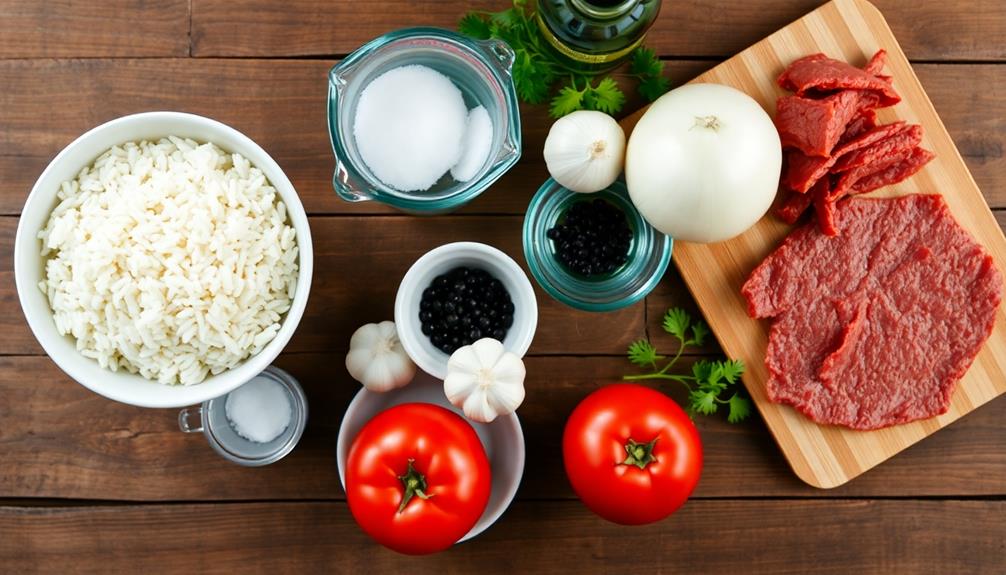
To begin the cooking process, heat a large skillet or pan over medium heat. Once it's warm, add a splash of oil and let it heat up for a moment.
Now, it's time to add your diced onions! Toss them into the pan and watch as they sizzle and dance. Stir them around with a wooden spoon, making sure they're evenly spread out.
As the onions start to turn translucent and release their sweet aroma, it's time to add the minced garlic. Garlic is like the superhero of flavors, so don't be shy! Sprinkle it in and give everything a good stir.
You'll smell the amazing combination of onions and garlic filling your kitchen – it's enough to make your mouth water!
Keep stirring the mixture for about 3-5 minutes, or until the onions are soft and golden. Be careful not to let them burn, or they'll taste bitter. If you notice the pan getting too hot, just turn down the heat a bit.
Congratulations! You've mastered the art of sautéing onions and garlic, setting the perfect foundation for your delicious Rice Carreteiro.
Step 2. Add Meat to Pan
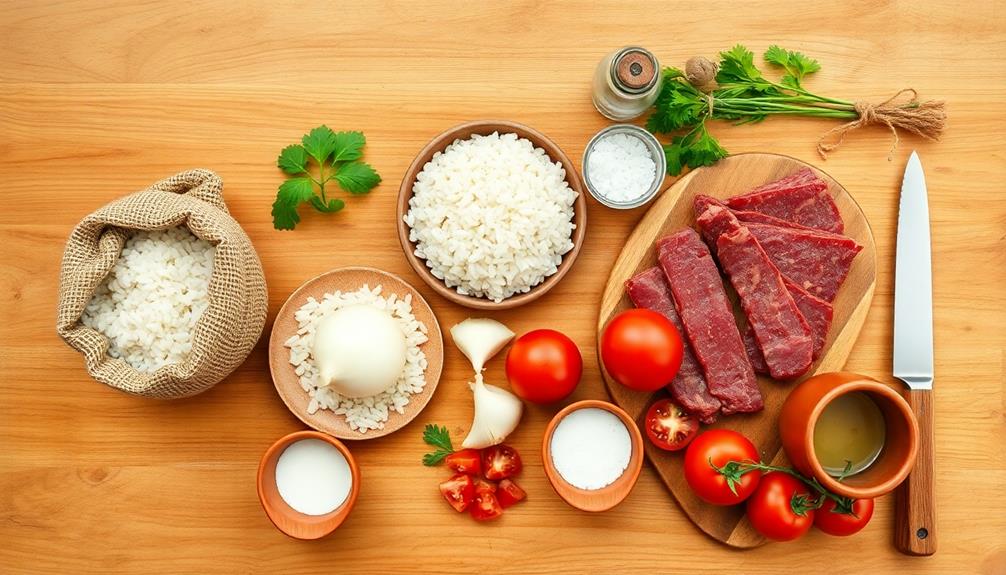
Once the onions and garlic are fragrant and golden, it's time to add the star of the dish – the meat.
You'll want to use leftover meat, like beef or pork, that's been cut into small, bite-sized pieces. If you don't have leftovers, no worries! You can use fresh meat, but make sure to cook it separately first.
Add the meat to the pan with the onions and garlic. Stir everything together, making sure the meat is evenly distributed. The pan might sizzle and pop a bit, so be careful!
Let the meat cook for a few minutes, stirring occasionally. This will help the flavors blend together and give the meat a nice, slightly crispy texture.
As you're cooking, you might notice a delicious aroma filling your kitchen. That's the magic of Rice Carreteiro happening right before your eyes!
Keep an eye on the meat, making sure it doesn't stick to the bottom of the pan. If it starts to, just give it a quick stir. You're doing great, chef!
Step 3. Add Rice and Spices
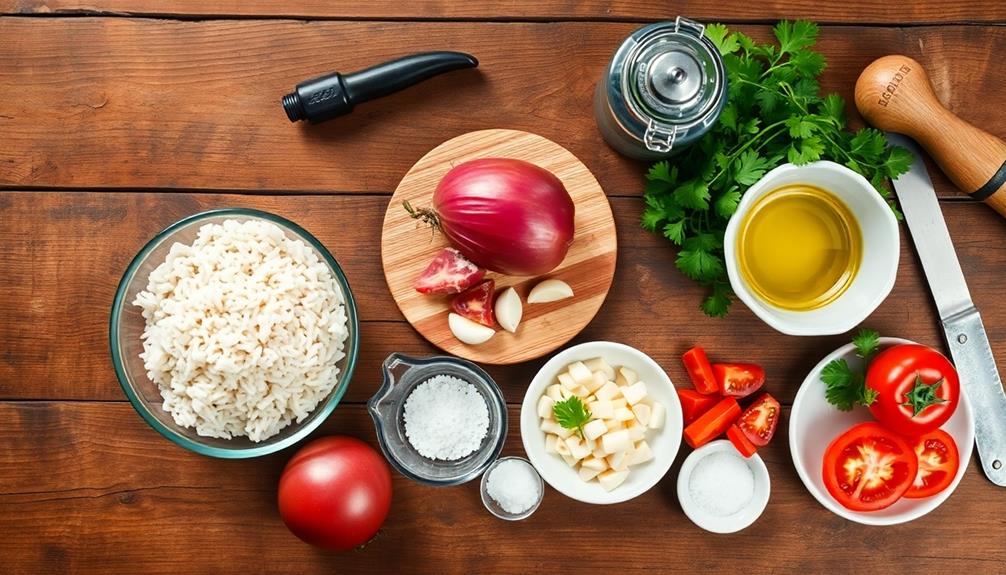
Now that the meat is nicely cooked, it's time to add the rice and spices. Pour in the uncooked rice, stirring it well to coat each grain with the flavorful meat juices. This step is crucial for infusing the rice with delicious taste!
Next, sprinkle in your favorite spices. Traditional choices include salt, black pepper, and a pinch of cumin, but feel free to experiment with others you like.
Don't forget to add some chopped garlic and onions if you haven't already. They'll give your Arroz Carreteiro an extra punch of flavor. As you mix everything together, take a moment to enjoy the wonderful aroma filling your kitchen. It's going to be so yummy!
Now, pour in enough hot water or broth to cover the rice by about an inch. Give it a final stir, then cover the pan and let it simmer. The rice will absorb all those tasty flavors as it cooks, turning into a mouthwatering dish.
Keep an eye on it, stirring occasionally to prevent sticking, and add more liquid if needed.
Step 4. Add Broth and Simmer
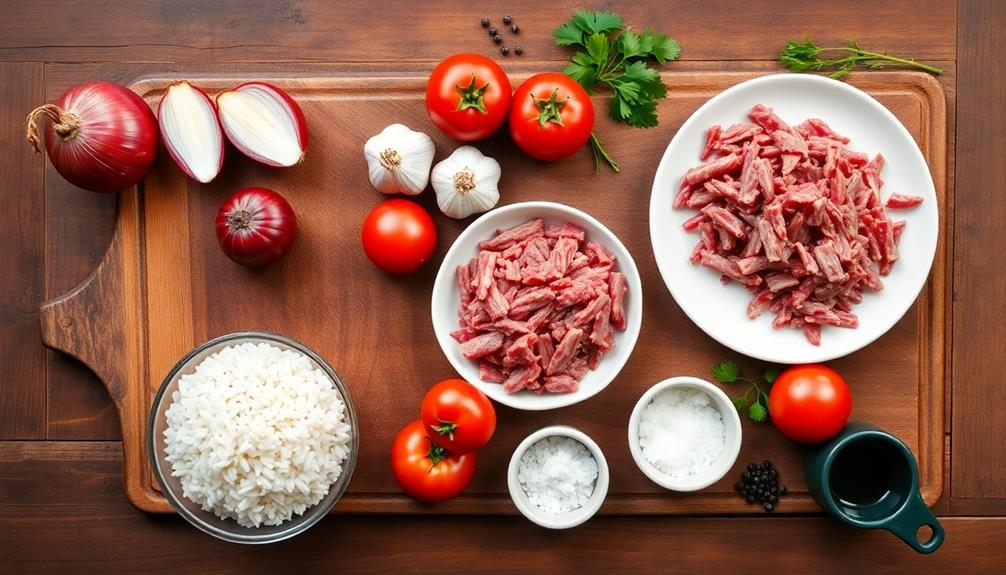
After adding the rice and spices, it's time to introduce the broth and let everything simmer. You'll want to use a flavorful broth that complements the dish. Chicken or beef broth works great, but vegetable broth is a tasty option too if you're keeping things meat-free. Pour the broth into the pan, making sure there's enough to cover the rice completely.
Now, here's where the magic happens! Give everything a good stir to mix the ingredients well. Then, lower the heat to medium-low and cover the pan with a tight-fitting lid.
This is when patience becomes your best friend in the kitchen. Let the rice simmer gently for about 18-20 minutes, resisting the urge to peek too often. The rice will slowly absorb the broth, becoming tender and full of flavor. As it cooks, you might catch whiffs of the delicious aromas wafting through your kitchen.
When the time's up, remove the lid and fluff the rice with a fork. If there's still some liquid, let it cook for a few more minutes uncovered.
Step 5. Garnish With Fresh Herbs
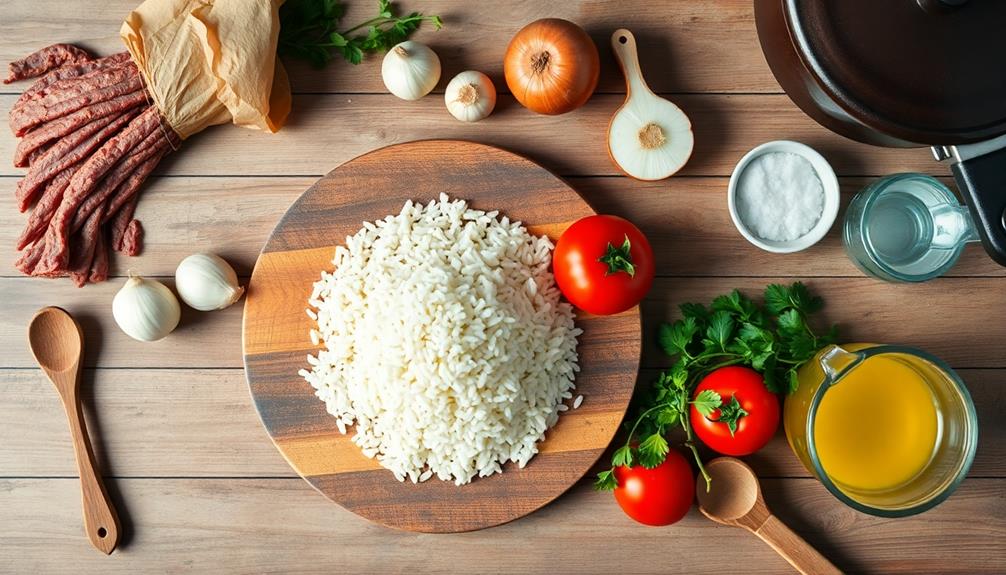
Your Rice Carreteiro's final touch comes with a vibrant garnish of fresh herbs. Once your dish is cooked to perfection, it's time to add that extra burst of flavor and color. Grab a handful of fresh parsley and chop it finely. You can also use cilantro if you prefer its zesty taste.
Sprinkle the herbs generously over the top of your Rice Carreteiro, making sure to cover the entire surface. Don't be shy with the herbs! They'll not only make your dish look prettier but also add a wonderful aroma and taste.
If you're feeling adventurous, you can mix in some chopped green onions or chives for an extra layer of flavor. As you scatter the herbs, take a moment to appreciate how they transform your dish from simple to spectacular.
The bright green specks will pop against the rich, savory rice, creating a feast for both your eyes and taste buds. Remember, garnishing isn't just about looks – it's about enhancing the overall experience of your meal. So go ahead, give your Rice Carreteiro that final flourish it deserves!
Final Thoughts
Rice Carreteiro's charm lies in its simplicity and versatility. You'll love how easy it's to make and how you can adapt it to your taste. It's a great way to use up leftovers, too! Remember, the key to a delicious Rice Carreteiro is using flavorful ingredients and cooking the rice just right.
Don't be afraid to experiment with different meats or veggies. You might discover a new favorite combination! This dish is perfect for family dinners, potlucks, or even a quick weeknight meal. It's filling, tasty, and sure to please everyone at the table.
As you make Rice Carreteiro more often, you'll develop your own special touch. Maybe you'll add a secret spice or tweak the cooking time. That's the beauty of this dish – it's meant to be personalized!
Frequently Asked Questions
Is Arroz Carreteiro Suitable for Vegetarians or Vegans?
Arroz carreteiro isn't typically suitable for vegetarians or vegans. It's traditionally made with beef jerky and sometimes other meats. However, you could modify the recipe to create a vegetarian version by using plant-based protein substitutes.
What Are Some Popular Side Dishes to Serve With Arroz Carreteiro?
You'll love pairing your dish with popular sides like crispy farofa, fresh vinagrete salad, or tangy couve à mineira. Don't forget grilled vegetables, black beans, or fried plantains for a complete and satisfying meal.
Can Arroz Carreteiro Be Made in Advance and Reheated?
Yes, you can make it in advance and reheat it. It's actually better when reheated, as the flavors meld together. Just store it properly in the fridge and warm it up gently when you're ready to eat.
How Long Does Leftover Arroz Carreteiro Stay Fresh in the Refrigerator?
You can safely store your leftover dish in the refrigerator for up to 3-4 days. Make sure you cool it quickly and store it in an airtight container. Always reheat thoroughly before eating to ensure food safety.
Are There Any Regional Variations of Arroz Carreteiro in Brazil?
You'll find regional variations of this dish across Brazil. In the south, they often use churrasco leftovers. In the northeast, you might see dried meat or coconut added. Some regions include beans or different spices.
